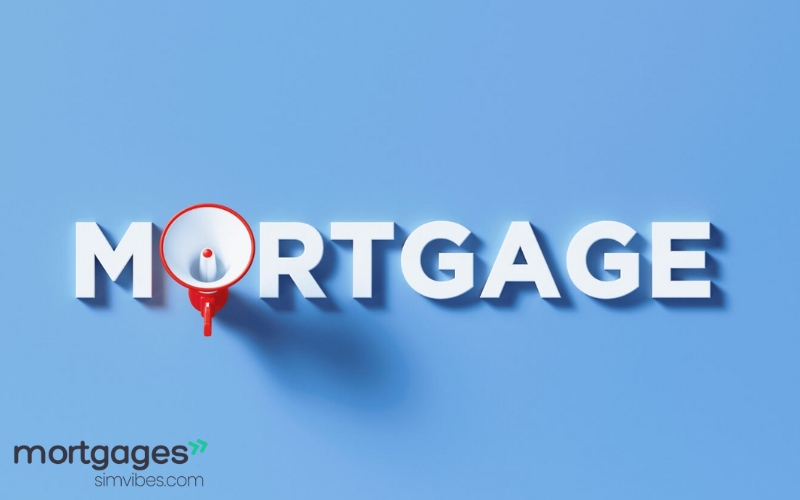Opening a new mortgage is a big decision, especially if you are planning to buy a home or property. The process can be quite complicated if you do not understand the necessary steps. However, if you understand the basics and are fully prepared, opening a new mortgage will be easier than ever. This article will guide you through the steps to open a new mortgage efficiently and easily.
1. DETERMINE THE RIGHT TYPE OF MORTGAGE
Before opening a mortgage, you need to determine which type of mortgage best suits your financial needs and long-term plans. Common types of mortgages include fixed-rate mortgages, adjustable-rate mortgages (ARMs), and short-term or long-term mortgages.

Each type of mortgage has different characteristics, for example, a fixed mortgage will protect you from interest rate fluctuations, while an adjustable rate mortgage may offer a lower interest rate initially but may change in the future. Carefully consider factors such as your ability to repay, the length of the loan, and the level of risk you can accept.
2. CHECK YOUR CREDIT SCORE
Credit is an important factor in determining whether you qualify for a loan and what interest rate you will receive. Before opening a mortgage, you should check your credit score. A high credit score makes it easier to get approved for a loan with a favorable interest rate, while a low credit score can mean you have to pay a higher interest rate or not qualify for a loan at all.
To have a good credit score, you need to make sure you pay your old loans on time, minimize outstanding debts, and check your credit report regularly to correct any errors.
3. ASSESS YOUR FINANCIAL ABILITY
When deciding to open a mortgage, you need to determine your financial capacity to ensure that you can repay the loan easily. This involves not only your income but also your monthly expenses, outstanding debts, and the amount you have available for a deposit.
Most banks and financial institutions require a debt-to-income ratio (DTI) below a certain level. DTI is the percentage of your income that you spend on monthly debts, including your mortgage. A low DTI ratio will make it easier for you to be approved for a loan and receive a better interest rate.
4. CHOOSE A BANK OR FINANCIAL INSTITUTION
After determining the type of mortgage and assessing your financial capacity, the next step is to choose a bank or financial institution to borrow from. You can choose from traditional banks, financial institutions, or even online financial companies. Each institution will have different loan conditions and interest rates.
Before deciding, consult and compare interest rates, related fees such as account maintenance fees, early repayment fees, or late fees. Make sure you understand the terms of the contract before signing.
5. CALCULATE YOUR DEPOSIT
A deposit is the amount of money you need to pay before you start your mortgage. It usually ranges from 10% to 20% of the value of the property you are buying. This helps to ease the burden on the bank and increases your chances of getting approved.
If you can afford a large deposit, you will be able to borrow less and pay a lower interest rate. However, you also need to consider your financial capacity to ensure that the deposit does not affect other expenses.
6. WORK WITH A MORTGAGE ADVISOR
One of the easiest ways to get a mortgage is to work with a mortgage advisor. These professionals will help you research the types of mortgages that are right for you, provide advice on your loan options, and support you throughout the application process. They will also help you evaluate the pros and cons of each type of mortgage, helping you make a more informed decision.
A mortgage advisor can help you explain complex financial concepts and make sure you understand all the terms of your loan agreement before you sign.
7. PROVIDE THE REQUIRED DOCUMENTS
When you open a mortgage, you will need to provide a number of financial documents to prove your ability to borrow. These documents typically include:
Proof of income: Pay stubs, bank statements, and employer income certificates.
Credit report: To confirm your credit score.
Asset documents: If you have other assets such as a vehicle, savings account, or real estate, you will need to provide information about them.
Identification: National ID, passport or other identification.
8. APPLY FOR MORTGAGE AND WAIT FOR APPROVAL
Once you have prepared all the documents and are clear about your mortgage options, you will fill out a loan application form. This application will ask you to provide information about your personal finances, income, assets and the loan amount you want.
Once you have submitted your application, the bank or financial institution will review your application. This process can take several days or weeks depending on the complexity of your application. During this time, the bank may ask you to provide additional information or documents.
9. SIGN THE MORTGAGE AGREEMENT
Once your loan application is approved, the bank will send you an official mortgage contract. You need to read the terms of the contract carefully, including the interest rate, loan term, related fees and payment terms.
If you agree to the terms, you will sign the contract and start the loan process. After signing, the bank will transfer the money to you to complete the home or real estate purchase transaction.
